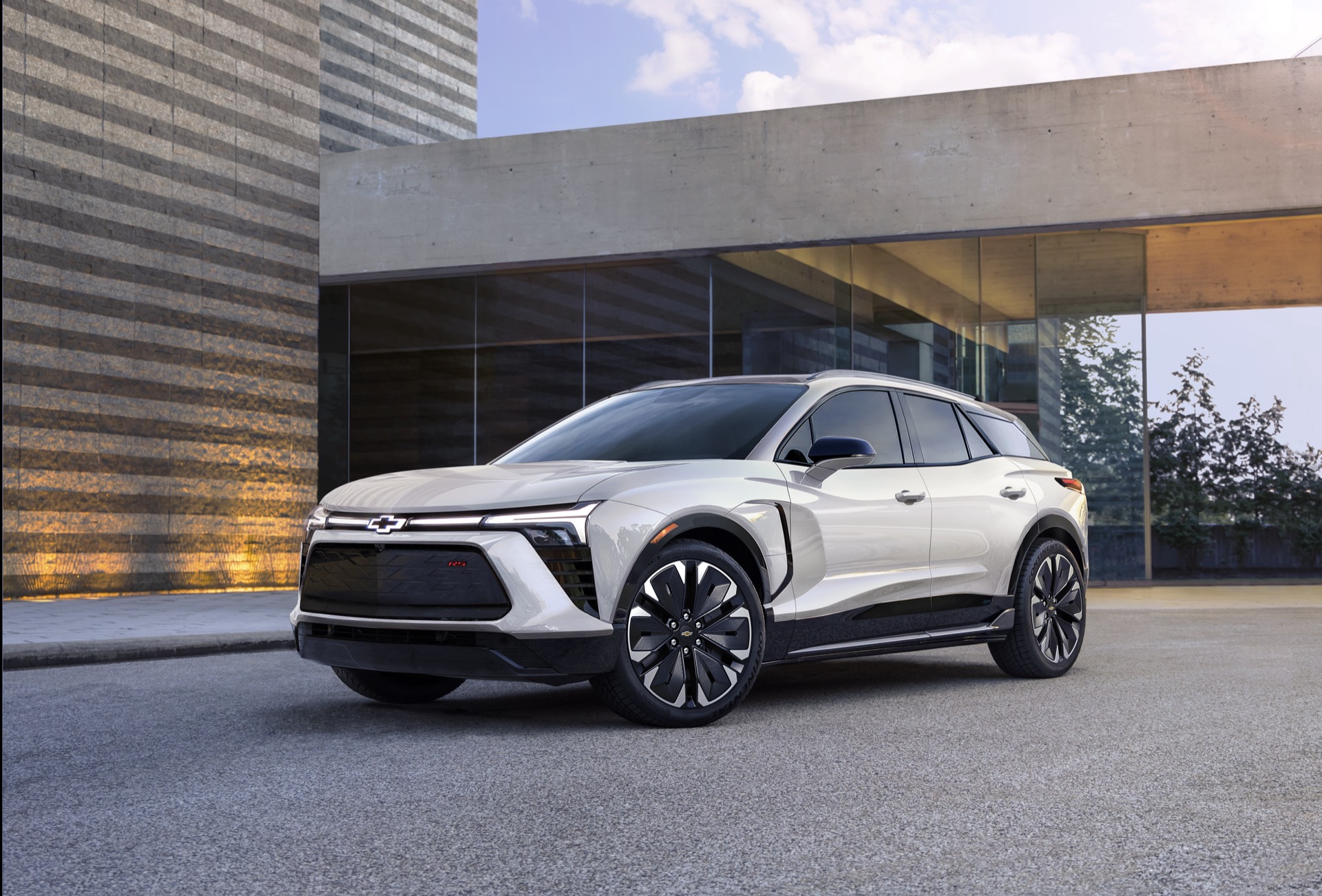Across the lineup, the Blazer EV includes all the key technology, interface, and connectivity features, while saving some of the comfort and convenience items as extra-cost upgrades. But we’re lukewarm on the value proposition presented in mid-level RS versions, and Chevy still hasn’t assigned a price to the base front-wheel-drive Blazer EV 2LT. All said, the infotainment and tech earn a couple points here—for a 7—with some reservations based on early interface bugs.
The Blazer LT (or 2LT) is offered with single-motor front-wheel drive or dual-motor all-wheel drive, with the 85-kwh battery pack, and it includes 19-inch machined-face aluminum wheels, a power driver’s seat, heated front seats, a heated steering wheel, heated side mirrors, wireless phone charging, and a power tailgate with kick sensor.
RS all-wheel-drive models add 21-inch machined-face alloy wheels with black pockets, a rear camera mirror, heated wiper base, power passenger seat, heated outboard rear seats, a head-up display, the illuminated front lightbar with bowtie animation, and additional blacked-out trim. RS rear-wheel-drive models with the larger 102-kwh battery pack and Bose premium audio with a subwoofer.
Another packaging idiosyncrasy we should note: AWD RS models don’t get the sunroof—at least not for at the time of launch.
All models include an 11.0-inch reconfigurable instrument display plus a 17.7-inch diagonal touchscreen infotainment system. That system is an EV-specific version of what the company has started rolling out to a number of new vehicles. With Google Built-in, it runs Google Maps natively on the system—rather than as an Apple CarPlay (not offered here) or Android Auto projection—allowing it to tap into the Blazer EV’s state of charge and other details. That permits built-in planning for charging stops along the way, as well as coordinated preconditioning for the fastest possible charge, as well as the option to prioritize roads supported for GM’s SuperCruise driving assistance.
The Blazer EV comes with the capability for over-the-air updates for the entire vehicle, which are set to be delivered through GM partner OnStar.
Warranty coverage includes a 3-year/36,000-mile basic warranty as well as battery coverage for eight years or 100,000 miles.
Which Blazer EV should I buy?
That might actually be the top-of-the-line SS, which is set to offer a performance proposition unlike anything else currently offered by GM—or mass-market brands, in this size of family vehicle.
If you have your mind set on the Blazer and value at the same time, the 2LT all-wheel drive might be the way to go, as you get a well-equipped family vehicle rated at 279 miles for $56,715.
How much is a fully loaded Chevrolet Blazer EV?
For now, that’s the Blazer RS rear-wheel drive. Yes, you read that right; while all-wheel-drive versions are usually the most expensive in the lineup, the rear-wheel-drive RS comes with the bigger 102-kwh battery pack. A $2,620 Convenience and Driver Confidence Package can add to the RS a head-up display, rear camera mirror, heated wiper base, heated outboard rear seats, a surround-view camera system, and enhanced automatic emergency braking with intersection and bicyclist alerts plus rear automatic braking. It should add up to $64,410.
Top-performance SS versions of the Blazer EV will top that by thousands, so don’t be surprised if those versions of Chevy’s electric crossover hit the $70k mark. In addition to their heightened acceleration and handling, they are due to get 22-inch machined-face aluminum wheels with carbon-painted pockets, an advanced parking aid, and a two-tone (blacked-out) roof.


